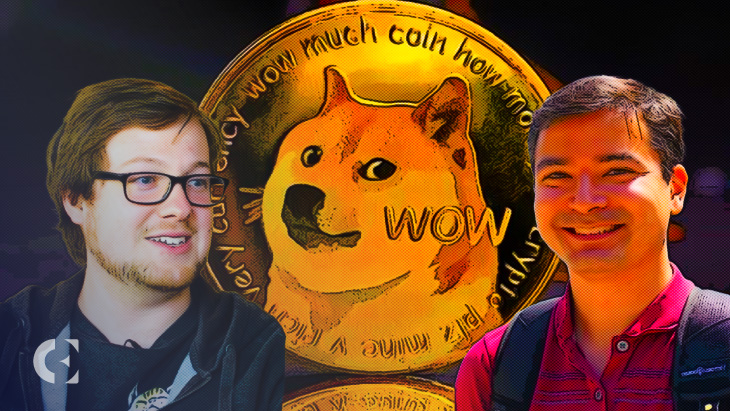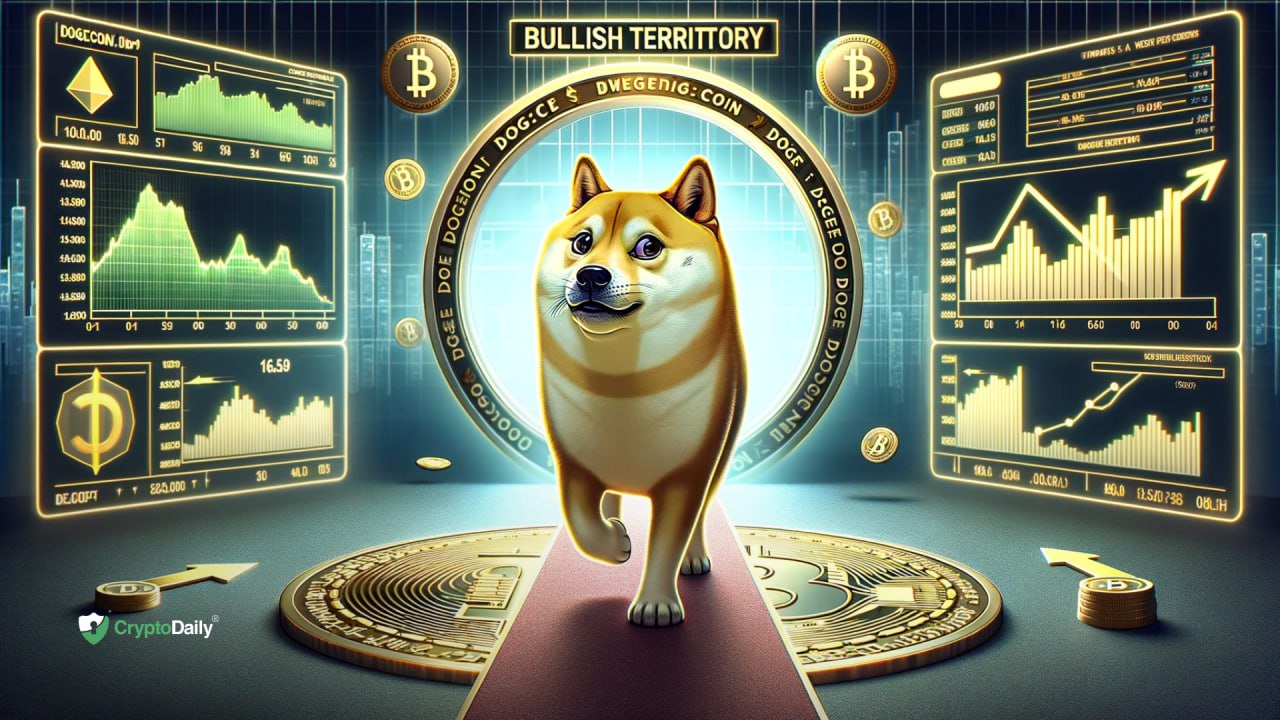Cryptocurrencies have become a cornerstone of modern finance, offering decentralized solutions to traditional financial systems. Among the myriad options available, Dogecoin stands out as a unique and intriguing player. Originating as a lighthearted joke inspired by a popular internet meme featuring the Shiba Inu dog, Dogecoin has since evolved into a serious contender in the crypto market. In this comprehensive guide, we will delve into the intricacies of Dogecoin, exploring its history, technology, community, and future prospects.
Understanding Dogecoin:

Dogecoin was created in 2013 by software engineers Billy Markus and Jackson Palmer. Markus, a programmer from Portland, Oregon, and Palmer, a marketer from Sydney, Australia, joined forces to develop a cryptocurrency that would appeal to a broader audience beyond the typical tech-savvy demographic. Drawing inspiration from the popular Doge meme, which features a Shiba Inu dog surrounded by comic sans text, they launched Dogecoin as a light-hearted alternative to the more serious and complex cryptocurrencies of the time.
Dogecoin was initially created as a satirical response to the proliferation of cryptocurrencies at the time, particularly Bitcoin. However, its playful branding and friendly community quickly garnered attention, transforming Dogecoin from a mere joke into a legitimate digital currency. Built on the codebase of Litecoin, Dogecoin operates on a Proof of Work consensus mechanism, allowing for fast and low-cost transactions. Despite its humble beginnings, Dogecoin has established itself as a prominent cryptocurrency, boasting a market capitalization in the billions and a dedicated following worldwide.
Reason for Developing Dogecoin:
The development of Dogecoin was spurred by a desire to create a cryptocurrency that was more accessible and user-friendly than its predecessors. Markus and Palmer envisioned Dogecoin as a fun and approachable alternative to the often complex and intimidating world of cryptocurrencies. By incorporating the beloved ‘doge’ meme into its branding and fostering a welcoming community, Dogecoin succeeded in attracting a diverse audience, ranging from casual internet users to seasoned crypto enthusiasts. Its inclusive ethos and charitable initiatives have further endeared Dogecoin to its supporters, cementing its reputation as a cryptocurrency with a heart.
Working of Dogecoin:

Dogecoin operates on a blockchain similar to Bitcoin, utilizing a Proof of Work consensus mechanism to validate transactions and secure the network. However, Dogecoin distinguishes itself with faster block times, enabling quicker transaction confirmations compared to its counterparts. This makes Dogecoin particularly well-suited for microtransactions and everyday use cases, such as tipping content creators on social media platforms. Additionally, Dogecoin’s inflationary supply ensures a steady flow of new coins into circulation, providing incentives for miners and maintaining network security.
Mining and Supply of Dogecoin:
Mining Dogecoin involves the process of using computational power to solve complex mathematical puzzles, with successful miners being rewarded with newly minted DOGE coins. Unlike Bitcoin, which has a fixed supply cap, Dogecoin has an uncapped supply, with billions of coins already in circulation and new coins being created at a steady pace. This inflationary model has both advantages and drawbacks, as it incentivizes mining and ensures a steady supply of coins for transactions but may also impact long-term value and scarcity.
Technology Used for Mining Dogecoin:

Dogecoin mining relies on specialized hardware known as ASIC (Application-Specific Integrated Circuit) miners, which are optimized for solving the cryptographic puzzles required to validate transactions on the Doge blockchain. These miners compete to solve blocks and earn rewards, with the mining difficulty adjusting dynamically to maintain a consistent block time. Additionally, mining pools allow individual miners to combine their resources and increase their chances of successfully mining blocks and earning rewards.
Utility of Dogecoin:
Despite its origins as a meme-inspired cryptocurrency, Dogecoin has found practical utility in various domains, including online tipping, charitable donations, and remittances. Its low transaction fees and fast confirmation times make it an attractive option for small-value transactions, while its vibrant community and social media presence have facilitated its adoption as a means of expressing appreciation and support online. Furthermore, Dogecoin’s charitable initiatives, such as the Dogecoin Foundation and community-driven fundraisers, have demonstrated its potential to make a positive impact beyond the realm of finance.
Advantages and Disadvantages of Dogecoin:
Dogecoin’s strengths lie in its strong community support, fast transaction speeds, and low fees, which make it an accessible and user-friendly cryptocurrency for everyday transactions. However, its inflationary supply model and lack of advanced features, such as smart contracts, may limit its appeal for certain use cases and investors seeking long-term value appreciation. Additionally, Dogecoin’s reliance on Proof of Work mining and the environmental concerns associated with energy-intensive mining operations pose challenges in an increasingly eco-conscious world.
The Journey of Dogecoin:
Dogecoin’s journey from meme to mainstream has been marked by numerous highs and lows, including viral moments, celebrity endorsements, market fluctuations, and community-driven initiatives. Despite facing skepticism and ridicule from some quarters of the crypto community, Dogecoin has defied expectations and earned a place in the hearts of millions of users worldwide. Its ability to adapt and innovate in response to changing market conditions and community needs underscores its resilience and enduring appeal.
Community Support and Endorsements:

One of the key factors behind Dogecoin’s success is its vibrant and dedicated community, which has contributed to its widespread adoption and mainstream recognition. From organizing charitable initiatives and sponsoring NASCAR races to tipping content creators, creating memes and engaging with influencers and fostering online communities, Dogecoin enthusiasts have demonstrated an unparalleled passion and camaraderie. Their efforts have helped propel Doge into the spotlight and establish it as a beloved icon in the world of cryptocurrency. Moreover, endorsements from high-profile figures, such as Elon Musk, Snoop Dogg, and Mark Cuban, have further elevated Dogecoin’s profile and contributed to its mainstream acceptance.
Innovation and Development:
Despite its lighthearted origins, Dogecoin continues to evolve and innovate, with developers actively working on improving the cryptocurrency’s technology, scalability, and functionality. Recent upgrades, such as the adoption of auxiliary proof-of-work (AuxPoW) and the integration of the Dogethereum bridge for interoperability with the Ethereum blockchain, have expanded Dogecoin’s capabilities and compatibility with other networks. Additionally, community-led initiatives, such as the Doge Foundation’s revival and efforts to promote education and adoption, highlight the ongoing commitment to advancing Dogecoin’s mission and ecosystem.
Notable Figures in Dogecoin’s History:
Billy Markus, also known by his online alias “Shibetoshi Nakamoto,” played a crucial role in the creation and early development of Dogecoin. His coding expertise and playful spirit were instrumental in shaping the coin’s identity and fostering its community-driven ethos. Jackson Palmer, on the other hand, brought marketing savvy and strategic vision to the project, helping Dogecoin gain traction and visibility in the crowded cryptocurrency landscape.
Dogecoin’s Rise to Prominence:
Despite its humble beginnings, Dogecoin quickly gained momentum and achieved widespread popularity, thanks in part to its active social media presence and meme-friendly branding. Within months of its launch, Dogecoin’s market capitalization surpassed $60 million, making it one of the top cryptocurrencies by valuation at the time. Its meteoric rise captured the attention of mainstream media outlets and drew comparisons to Bitcoin, further fueling interest and speculation in the burgeoning crypto market.
Dogecoin’s Impact on Charity and Social Good:
One of the most endearing aspects of Dogecoin is its philanthropic spirit and commitment to making a positive difference in the world. The Doge community has rallied behind various charitable causes, raising funds for disaster relief efforts, humanitarian projects, and community initiatives. Notable examples include the Doge Foundation’s support for clean water projects in Kenya and the sponsorship of the Jamaican bobsled team’s trip to the 2014 Winter Olympics. These acts of kindness have earned Dogecoin praise and admiration from supporters and critics alike, showcasing the power of cryptocurrency to effect meaningful change.
Dogecoin’s Technical Specifications:
Technically, Dogecoin is a fork of Litecoin, a popular cryptocurrency that shares many similarities with Bitcoin. However, Doge distinguishes itself with a few key features, including faster block times, lower transaction fees, and an inflationary supply model. Unlike Bitcoin, which has a fixed supply cap of 21 million coins, Doge has no maximum supply limit, with billions of coins already in circulation and new coins being created at a steady rate through mining rewards.
Dogecoin’s Market Performance and Adoption:
In terms of market performance, Dogecoin has experienced significant volatility over the years, with its price fluctuating wildly in response to market trends, social media hype, and celebrity endorsements. At its peak in May 2021, Doge reached an all-time high price of over $0.70 per coin, propelled by endorsements from high-profile figures such as Elon Musk and Mark Cuban. However, Dogecoin’s price has since retraced, reflecting the broader volatility and uncertainty in the cryptocurrency market.
Future Prospects and Challenges:
Looking ahead, Dogecoin faces both opportunities and challenges as it seeks to maintain its momentum and relevance in an increasingly competitive and dynamic crypto landscape. On the one hand, Dogecoin’s widespread popularity, strong community support, and innovative spirit position it favorably for continued growth and adoption. However, concerns about regulatory scrutiny, technological limitations, and market volatility remain significant hurdles that must be addressed. By embracing innovation, fostering collaboration, and staying true to its core principles of accessibility and inclusivity, Doge can navigate these challenges and realize its potential as a leading cryptocurrency for the digital age.
Conclusion:
In conclusion, Dogecoin has transcended its origins as a meme coin like Pepe, Super trump and Meme Ai to become a significant and enduring presence in the cryptocurrency ecosystem. With its playful branding, passionate community, and practical utility, Doge exemplifies the democratizing power of blockchain technology and the internet. While its journey has been marked by twists and turns, Dogecoin’s resilience, adaptability, and spirit of fun have endeared it to millions of users worldwide. As it continues to evolve and innovate, Doge is poised to leave a lasting legacy as a symbol of creativity, community, and possibility in the world of digital finance.

